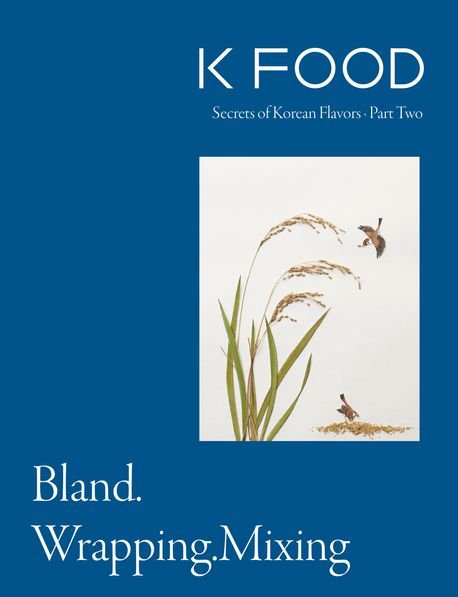<KR>
〈 K FOOD: 한국 맛의 비밀: 2부, 블랜드, 랩핑, 믹싱 〉
밥을 제외한 모든 음식이 밥과 곁들이는 반찬으로 여겨질 정도로 한식의 기본 구성은 밥입니다. 담백하고 순한 밥은 온갖 반찬의 맛을 차별화하며 동시에 융합합니다. 온갖 재료를 한데 모아 입에 넣는 '쌈밥'과 '김밥', 다양한 재료를 섞어 먹는 '비빔밥' 등 퓨전 문화의 비밀을 탐구했습니다. 또한 싸서 먹는 일상 요리 레시피도 포함되어 있습니다.
<ENG>
〈 K FOOD: Secrets of Korean Flavors: Part 2, Bland, Wrapping, Mixing 〉
The basic composition of Korean food is rice, to the extent that all food except rice is considered a side dish to accompany rice. The bland and mild rice differentiates the taste of all kinds of side dishes and fuses them simultaneously. We explored the secrets of fusion culture, such as 'ssambap' and 'gimbap,' where you put together all kinds of ingredients and put them in your mouth, and 'bibimbap,' which is eaten by mixing various ingredients. It also includes recipes of everyday dishes that are eaten wrapped and mixed.
<FR>
〈 K ALIMENTATION: Secrets des saveurs coréennes: Partie 2, Bland, Emballage, Mélange 〉
La composition de base des aliments coréens est le riz, dans la mesure où tous les aliments, à l'exception du riz, sont considérés comme des plats d'accompagnement pour accompagner le riz. Le riz fade et doux différencie le goût de toutes sortes de plats d'accompagnement et les fusionne simultanément. Nous avons exploré les secrets de la culture de fusion, comme le « ssambap » et le « gimbap », où vous réunissez toutes sortes d'ingrédients et les mettez dans votre bouche, et le « bibimbap », que l'on mange en mélangeant divers ingrédients. Il comprend également des recettes de plats de tous les jours qui sont mangés enrobés et mélangés.
목차
〈 K FOOD: Secrets of Korean Flavors: Part 2, Bland, Wrapping, Mixing 〉
Prologue
Bland Wrapping and Mixing
The Fusion Culture Created by Rice
Bland
The Korean Way of Dining
Why Have Koreans Made Rice Their Staple Food?
Future of the 0.001%: Korea’s Native Rice
An Introduction to Korea’s Most Prominent Native Rice Cultivars
Comparing the Tastes of Korean Rice Cultivars
The Infinite Transformations of Ssal and Bap in the Korean Language
Tools to Make Rice: From Cast-Iron Cauldrons to Pressure Cookers
Secrets of Instant Rice
Why Did Koreans Drink Sungnyung After Meals?
Juk: A Food That Came Before Cooked Rice
Wrapping Everything
Korean Ssambap: Fortune and Health in a Wrap
How Quick Meals in the Fields Became Ssambap
Common Wrapping Leaves in Korea
Gujeolpan: Ssam, Elevated
What’s in a Royal Lettuce Ssam?
When Did Koreans Start Eating Gimbap?
Korea’s Mandu vs. China’s Dumplings
The Secrets of Frozen Mandu
Mixing Cooked Rice
Bibimbap: A Commonwealth of Flavors
Haeju Bibimbap
Jinju Bibimbap
Tongyeong Bibimbap
Andong Bibimbap
Jeonju Bibimbap
Sesame Oil and Perilla Oil: The Finishing Touches of Korean Dishes
Korea’s Top Bibimbap Restaurants
Everyday Korean Dishes Made by Mixing and Wrapping

















